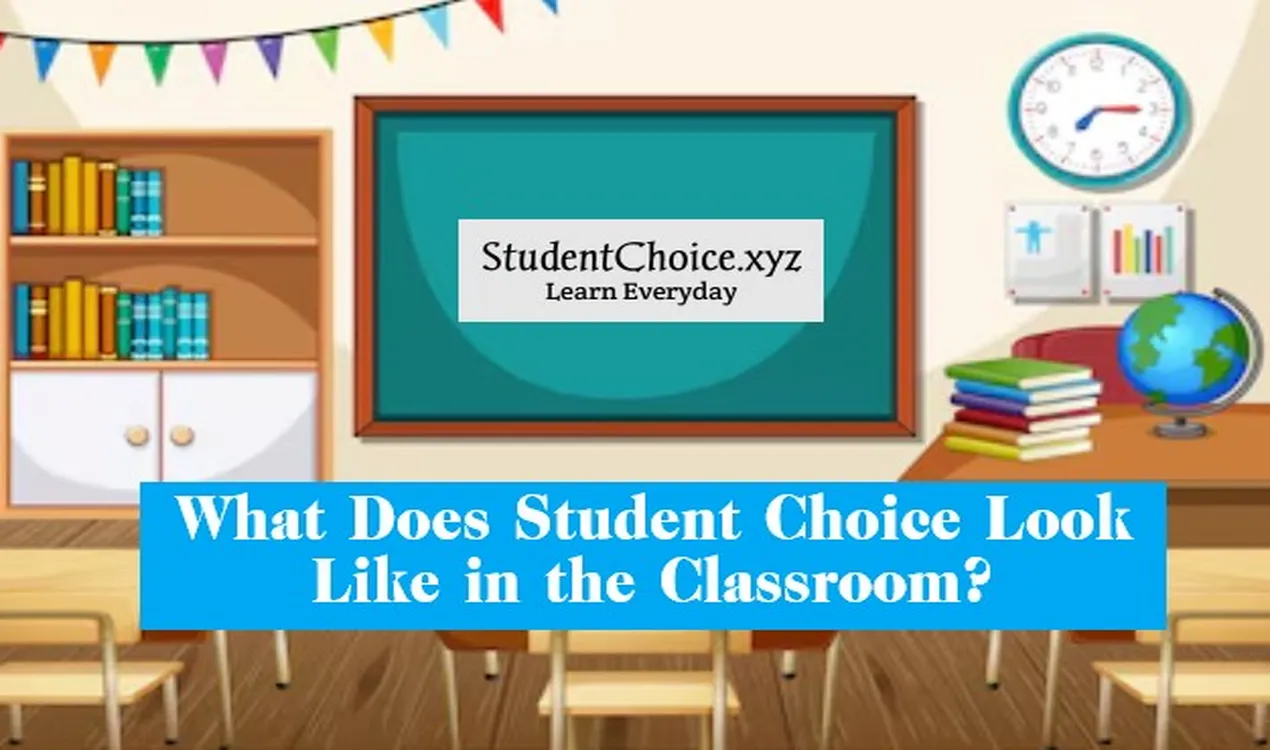
What Does Student Choice Look Like in the Classroom
Have you ever felt truly excited to complete a school assignment? Chances are, that excitement stemmed from having a say in what you were learning or how you were learning it. This is the power of student choice in education. But what does student choice look like in the classroom, and how can we harness its potential to transform learning? In this post, I am going to discuss on What Does Student Choice Look Like in the Classroom?

What is Student Choice?
Student choice, in the context of education, means giving students a voice and agency in their learning journey. It’s about empowering them to make decisions about what they learn, how they learn it, and how they demonstrate their understanding. This can range from choosing a topic for a project to selecting the format for an assessment.
Read more: Why is Student Choice an Important Part of Differentiation?
What Does Student Choice Look Like in the Classroom?
Student choice can manifest in a variety of ways, depending on the grade level, subject matter, and teacher’s preferences. Here are a few examples:
Different Ways to Offer Choices
Content Choice: Allowing students to select topics for projects, research, or presentations within a given curriculum framework. For example, in a history class studying the American Revolution, students could choose to research a specific battle, a key figure, or a social impact of the war.
Process Choice: Providing options for how students demonstrate their learning. This could include traditional methods like essays and tests, but also more creative options like videos, podcasts, artwork, or even building models.
Product Choice: Letting students decide how they want to showcase their final products. This could involve creating presentations, websites, physical models, or writing a blog post.
Learning Environment Choice: Offering flexible seating arrangements, quiet workspaces, or collaborative group areas to cater to different learning preferences.
Tools and Resources Choice: Allowing students to select the technology, materials, or resources they use for learning. This could include using different software for writing or design, or choosing physical materials for an art project.
Read more: Which Education Curriculum Is the Best in the World?
Examples of Student Choice in Action
Elementary School:
Choice boards for activities, differentiated reading materials based on interest, project-based learning with student-selected topics within a theme.
Middle School:
Genius Hour projects where students explore their passions, student-led conferences, choice in assessment formats (e.g., oral presentations, written reports, video essays).
High School:
Independent study projects, research papers on self-selected topics, choice in elective courses and career pathways.
Benefits of Student Choice
Implementing student choice in the classroom offers a multitude of benefits:
Increased Motivation and Engagement
When students have a say in their learning, they are more likely to be intrinsically motivated and engaged. Choice fosters a sense of ownership and responsibility, leading to increased effort and a desire to learn.
Improved Academic Performance
Research has shown that student choice can lead to improved academic performance. When students are interested in what they are learning and have a choice in how they learn it, they are more likely to understand and retain the information.
Development of 21st Century Skills
Student choice provides opportunities for students to develop essential 21st-century skills such as critical thinking, problem-solving, decision-making, and self-management. These skills are crucial for success in both academic and professional settings.
Implementing Student Choice: Tips and Strategies
Here are some practical tips for incorporating student choice in your classroom:
Start Small and Gradually Increase Choices
Begin by offering a limited number of choices and gradually increase the options as students become more comfortable with decision-making. This allows them to develop their decision-making skills and build confidence.
Provide Clear Expectations and Guidelines
Ensure students understand the learning goals and assessment criteria, even when they have choices. This helps them make informed decisions and stay focused on the learning objectives.
Offer Support and Guidance
Help students make informed choices by providing resources, scaffolding, and guidance. Differentiate choices to cater to diverse learning styles and abilities, ensuring all students can succeed.
Create a Culture of Trust and Respect
Encourage student voice and autonomy in the classroom. Create a safe and supportive environment where students feel comfortable expressing their preferences and making choices.
Addressing Potential Challenges
While student choice offers many benefits, it’s important to be aware of potential challenges and how to address them:
Classroom Management
Maintaining order and focus in a choice-rich environment requires clear expectations, routines, and procedures. Establish clear guidelines for behavior and noise levels, and provide opportunities for students to move and collaborate in a structured manner.
Time Constraints
Incorporating student choice may require adjustments to lesson planning and time management. Be efficient in your instruction and provide ample time for students to explore their choices and complete their work.
Meeting Individual Needs
Differentiate choices to cater to diverse learning styles, abilities, and interests. Provide a variety of options that challenge and engage all students, ensuring everyone can succeed.
Conclusion
Student choice is a powerful tool for creating a dynamic and engaging learning environment. By empowering students to make decisions about their learning, we can foster their motivation, enhance their academic performance, and equip them with essential 21st-century skills. Embracing student choice is an investment in the future of education, where students are active participants in their learning journey and are prepared to thrive in an ever-changing world.
We encourage you to share your experiences and ideas about student choice in the comments below. Let’s continue the conversation and work together to create classrooms where student voices are heard and their choices are valued.
